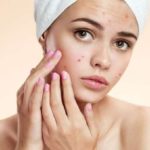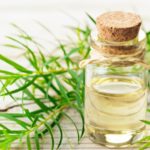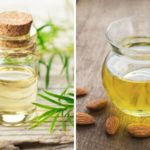Back acne is a common concern for many people that often doesn’t seem to decrease despite various measures. In this article, we will explore three types of oils that effectively treat back acne quickly.
1 Tea tree essential oil
Benefits of tea tree essential oil
Tea tree essential oil is extracted from the tea tree and contains potent antibacterial properties. It is rich in active ingredients such as terpinen-4-ol and cineol, making it beneficial for various beauty purposes:
- Acne treatment: Tea tree essential oil is widely used for treating acne, as the terpinen-4-ol compound effectively kills acne-causing bacteria. It helps reduce inflammation, cleanse the skin, and prevent the formation and development of acne.
- Anti-aging: The oil stimulates cell growth and helps prevent the aging process.
- Skin moisturization: Tea tree essential oil balances the skin’s moisture, keeping it soft and preventing dryness.
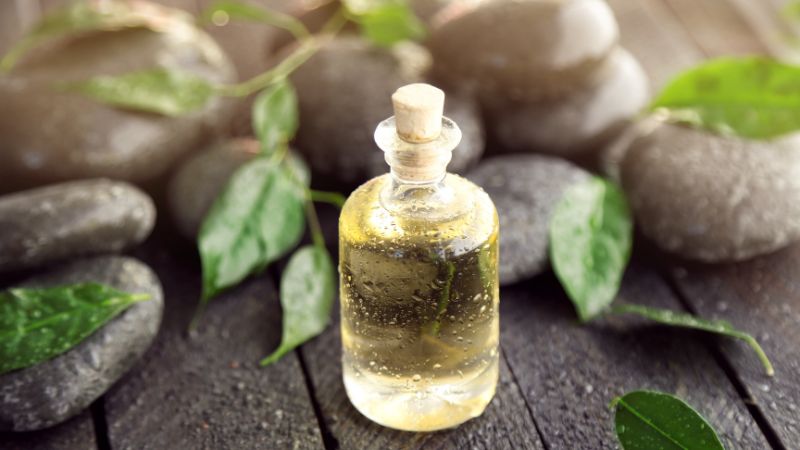 Tea tree essential oil has many beauty benefits
Tea tree essential oil has many beauty benefits
How to use tea tree essential oil
Tea tree essential oil is highly trusted by beauty enthusiasts for treating back acne. Follow these steps for optimal results:
Step 1: Cleanse the body with a cleanser to remove dirt before using tea tree essential oil.
Step 2: Mix 10-15 drops of tea tree essential oil with 100ml of warm water.
Step 3: Use a cotton pad to apply the oil evenly to the acne-affected area on the back. There’s no need to rinse with water.
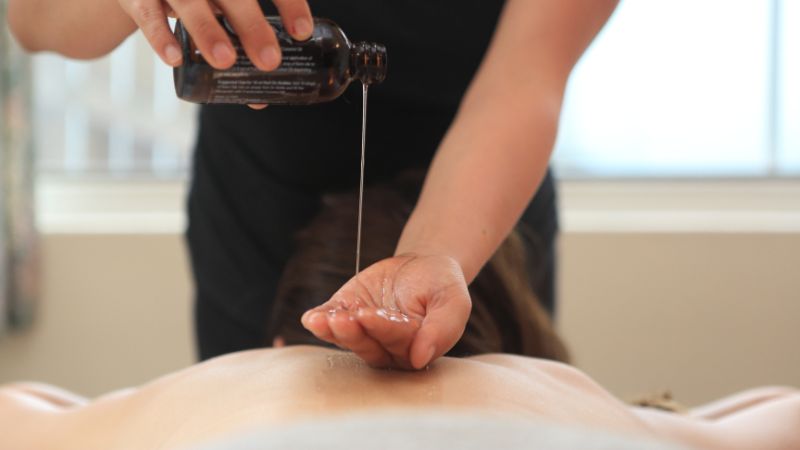
How to use tea tree essential oil for treating back acne
2Lavender essential oil
Benefits of lavender essential oil
Lavender essential oil is derived from lavender flowers, a herbal plant originating from the Mediterranean. It offers antioxidant, antibacterial, anti-inflammatory, and soothing properties, making it a popular ingredient in beauty and therapy with the following effects:
- Acne treatment: Lavender essential oil cleanses the skin, eliminates acne-causing bacteria, and promotes smooth and acne-free skin.
- Sleep support: Lavender essential oil helps improve sleep quality, aiding those suffering from insomnia or difficulty sleeping. Its scent promotes relaxation and ease of falling asleep.
- Stress reduction: Lavender essential oil has a pleasant scent that relaxes and helps reduce stress.
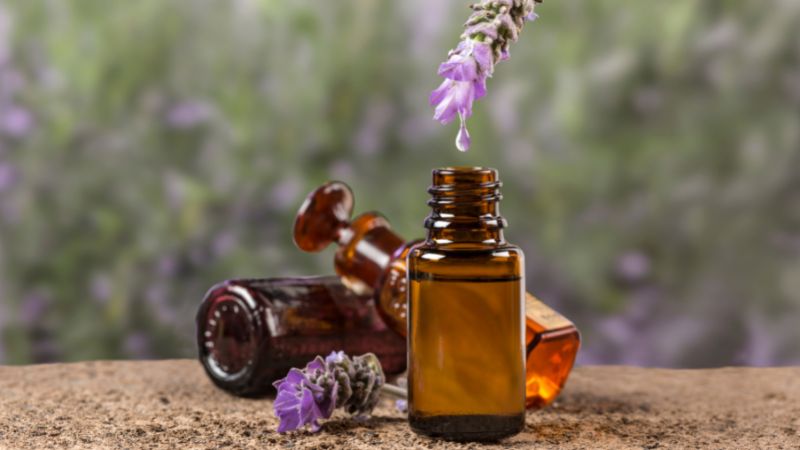
Lavender essential oil
How to use lavender essential oil
There are several ways to use lavender essential oil for treating back acne. Follow these steps for best results:
Step 1: Mix 7-8 drops of lavender essential oil with [carrier oil].
Step 2: Mix the mixture with bath water and soak the entire body for 10-15 minutes.
Step 3: Cleanse the body after the soaking period.
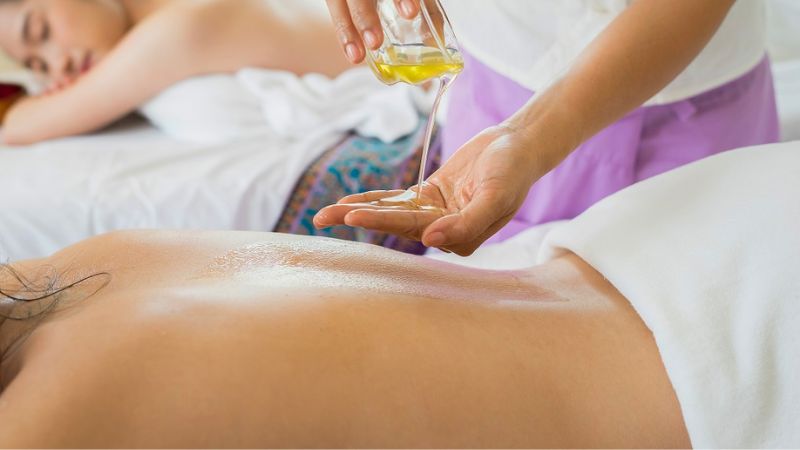
How to use lavender essential oil
3Clove essential oil
Benefits of clove essential oil
Clove essential oil is extracted from the flower buds or leaves of the clove tree. It contains essential nutrients such as vitamins and calcium. Additionally, it has anti-inflammatory, pain-relieving, and anesthetic properties. Eugenol, present in clove oil, acts as an excellent antibacterial and anti-inflammatory compound. Some uses of clove essential oil in beauty and therapy include:
- Acne treatment: Clove essential oil effectively treats acne, especially back acne, chest acne, and inflammatory acne, due to its strong antibacterial and anti-inflammatory effects.
- Sleep improvement: Clove essential oil’s mild and comforting fragrance promotes blood circulation and aids in falling asleep.
- Antioxidant effect: Eugenol, the active ingredient in clove essential oil, acts as a potent antioxidant. It is used in some anti-aging skincare products.

Clove essential oil
How to use clove essential oil
Clove essential oil is highly effective in treating back acne. Follow these steps for the best results:
Step 1: Cleanse the body to remove dirt before using the oil.
Step 2: Mix clove essential oil with sweet almond oil or coconut oil in a 1:10 ratio.
Step 3: Use a cotton ball soaked in the mixture to apply to each back acne spot. There’s no need to rinse.
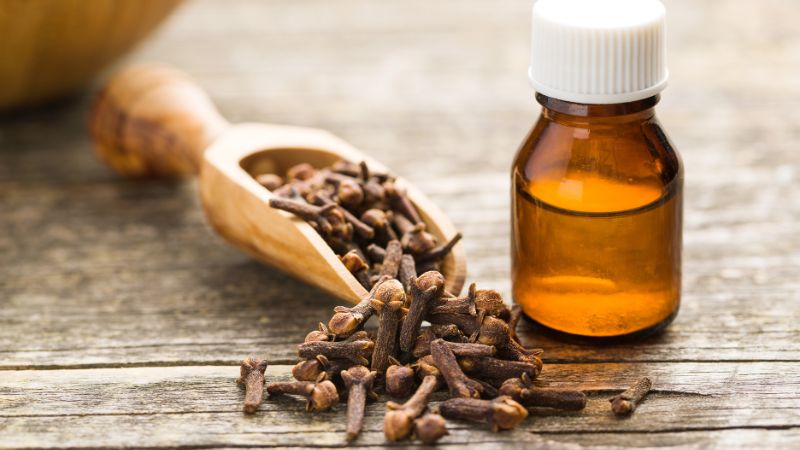
How to use clove essential oil
Above are three types of essential oils that effectively treat back acne quickly. We hope this article helps you find the right essential oil for treating back acne!
“Creating DIY Hand Sanitizer with Medical Alcohol According to WHO Guidelines”
With the rise of coronavirus pandemic, the demand for hand sanitizer has skyrocketed, leading many to make their own at home. The World Health Organisation (WHO) guidelines offer tips on how to make dry hand sanitizers to fight against illnesses, combining medical alcohol with other ingredients for efficient protection. Read on to find out what you need to know.

























